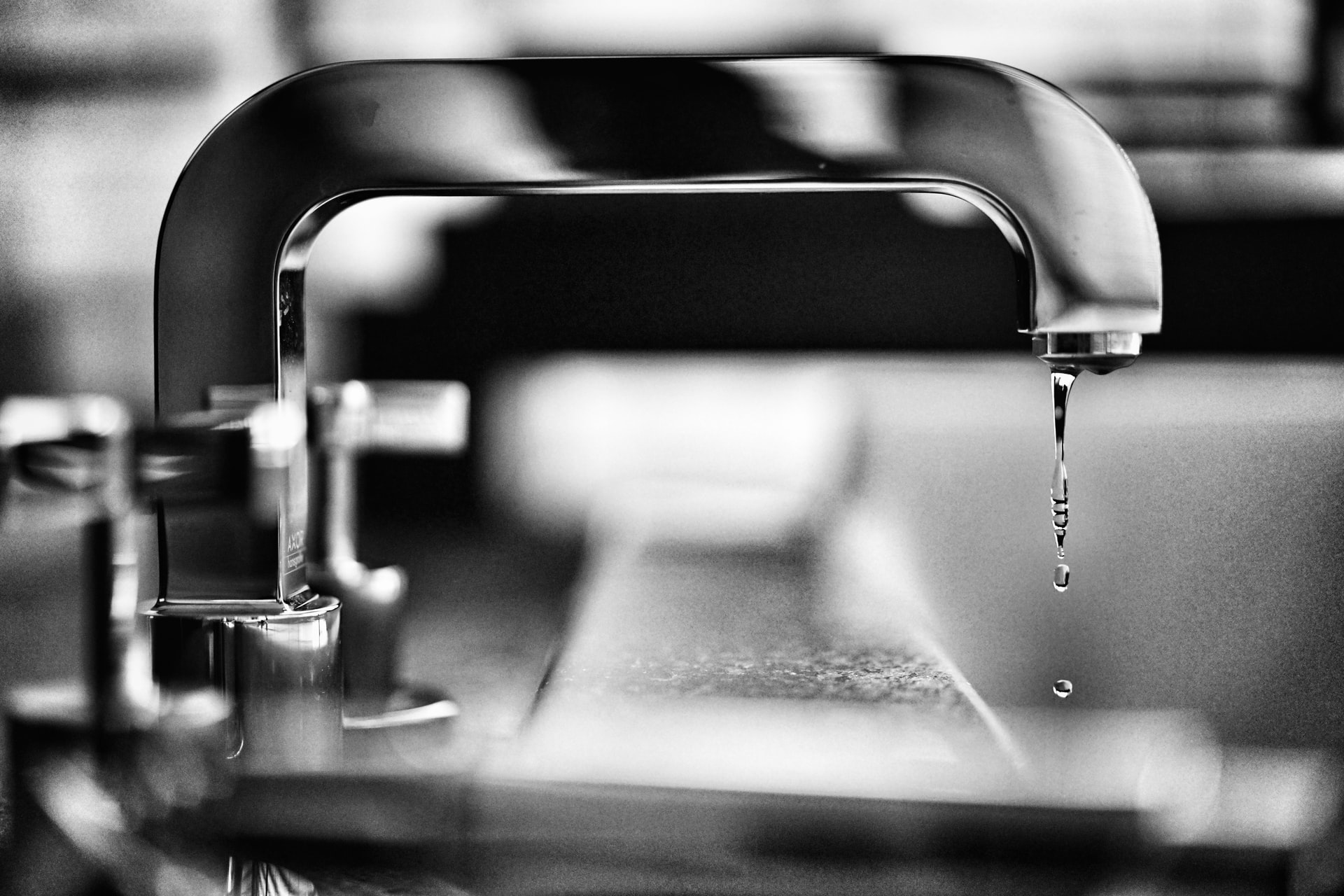Sustainable Piping Solutions: Enhancing Residential Sustainability
Sustainable Piping Solutions: Enhancing Residential Sustainability
Blog Article
We have encountered this article on Eco-Friendly Plumbing Practices for a Greener Home below on the internet and felt it made sense to share it with you over here.

Intro
In today's world, lasting living is coming to be progressively essential. One location where home owners can make a substantial effect is through green plumbing solutions. By taking on environmentally aware methods, houses can minimize their water and power usage while adding to a healthier planet.
Water-Efficient Components
Typical components often waste water needlessly. Nonetheless, modern-day low-flow toilets, faucets, and showerheads are created to reduce water use without giving up efficiency. These fixtures can significantly lower family water consumption, bring about lower water costs and a minimized ecological footprint.
Greywater Equipments
Greywater refers to carefully made use of water from sources such as showers, sinks, and cleaning machines. Rather than allowing this water go to waste, greywater systems reuse it for non-potable uses such as landscape irrigation and bathroom flushing. By applying a greywater system, property owners can save fresh water sources and lower stress on local wastewater therapy facilities.
Rainwater Harvesting
Rainwater harvesting involves collecting and storing rain for numerous functions, including watering, bathroom flushing, and laundry. Rain harvesting systems typically contain a collection surface (such as a roof), seamless gutters, downspouts, and storage tanks. By collecting rainwater, homeowners can minimize their reliance on local water sources and save fresh water resources.
Solar Water Heaters
Standard hot water heater rely upon nonrenewable fuel sources or electricity to warm water, contributing to carbon emissions and power intake. On the other hand, solar water heaters make use of sunshine to warm water, supplying a renewable and eco-friendly alternative. By utilizing solar power, homeowners can reduce their energy bills and minimize their carbon impact.
Green Pipe Materials
Standard pipes products such as copper and PVC can have adverse ecological influences throughout manufacturing and disposal. Nonetheless, there are lasting choices readily available, such as recycled steel, cross-linked polyethylene (PEX), and high-density polyethylene (HDPE). These green pipeline products use longevity, long life, and minimized environmental impact.
Energy-Efficient Appliances
Along with water-efficient components, energy-efficient appliances can further lower a family's environmental impact. High-efficiency washing machines and dish washers utilize much less water and energy per cycle, aiding to conserve resources and reduced utility costs. When searching for devices, search for power STAR ® accredited versions for maximum effectiveness.
Smart Water Management Solution
Advancements in technology have made it simpler than ever before to keep track of and enhance water use in the home. Smart water administration systems use sensors and data analytics to track water use in real-time, identify leakages, and provide insights for preservation. By executing wise water administration remedies, house owners can reduce waste and maximize performance.
Price Factors to consider
While environmentally friendly plumbing alternatives might have higher upfront costs than conventional alternatives, they usually offer long-lasting cost savings with minimized water and power expenses. Additionally, lots of governments provide motivations such as rebates and tax obligation credits for green upgrades, helping to counter initial costs.
Installation and Maintenance
Appropriate installation and normal upkeep are vital for ensuring the efficiency and long life of environmentally friendly pipes systems. It's important to employ competent specialists to install and service these systems to prevent concerns and make the most of effectiveness. Regular upkeep jobs such as looking for leaks and cleaning filters can also help prevent issues and maximize performance.
Environmental Benefits
The environmental benefits of environmentally friendly plumbing are significant. By saving water and energy, home owners can lower their carbon impact and lessen their impact on natural resources. In addition, green plumbing practices can aid safeguard communities and maintain biodiversity for future generations.
Health and wellness Benefits
Along with environmental advantages, eco-friendly pipes can additionally contribute to boosted indoor air high quality and wellness. By using non-toxic products and minimizing chemical exposure, home owners can create a healthier living atmosphere on their own and their family members.
Government Incentives
Numerous federal governments offer financial rewards to urge home owners to adopt environmentally friendly pipes methods. These motivations might consist of discounts, tax credit reports, and low-interest loans for energy-efficient upgrades. By benefiting from these programs, property owners can make environmentally friendly enhancements much more cost effective and obtainable.
Verdict
To conclude, environmentally friendly plumbing alternatives use various benefits for home owners and the atmosphere alike. By investing in water-efficient components, greywater systems, rainwater harvesting, solar hot water heater, environment-friendly pipe materials, energy-efficient devices, smart water administration systems, and other lasting remedies, houses can reduce their ecological impact, reduced their utility expenses, and contribute to a healthier world for future generations.
Eco-Friendly Plumbing: Transform Your Home with Sustainable Plumbing Options
Understanding Eco-Friendly Plumbing System
At its core, eco-friendly plumbing is all about minimizing water and energy consumption in your home. It’s a green plumbing revolution changing how we think about our water supply and energy use. It offers many options for homeowners, whether you’re upgrading your home or dealing with an older home. By making these changes, you can help the environment, save money on your water and electricity bills, and create a greener, more sustainable home. So, read on to learn how to use eco-friendly plumbing solutions today.
Low Flow Fixtures: A Key to Water Conservation
One of the cornerstones of eco friendly plumbing is the use of low-flow fixtures. These fixtures, which include faucets, showerheads, and toilets, are designed to use much less water than their traditional counterparts. For instance, low-flow showerheads use significantly less water per minute than a standard showerhead without compromising the quality of your shower.
Low-flow toilets are another excellent example of water-saving options. They use fewer gallons of water per flush, making them a more water-efficient choice. By reducing your water usage, these fixtures contribute to a greener home and substantial savings on your water bills.
Maintaining an Eco-Friendly Plumbing System
Another critical aspect of eco-friendly plumbing is addressing water leaks promptly. A small water leak can waste much water over time, leading to water damage and increased water bills.
Regularly checking your plumbing system and fixing leaks can help save gallons of water and reduce your water bills.
Tankless Water Heaters: Hot Water When You Need It
Tankless water heaters, a popular choice in eco-friendly plumbing, are a revolutionary way to heat water in your home. Unlike traditional water heaters that constantly heat a tank of water, tankless water heaters operate on an on-demand basis. This means they only use energy when you need hot water, making them a more energy-efficient option.
This innovative approach to heating water can significantly reduce the energy your home uses. Traditional water heaters constantly work to keep a water tank heated, which requires much energy. In contrast, tankless water heaters heat water when needed, reducing energy consumption and saving money on energy bills. This is a great way to make your home more eco-friendly and embrace an eco-friendly lifestyle.
Insulating Water Pipes: Maximizing Energy Efficiency
Insulating your water pipes is another effective method in eco-friendly plumbing. Proper insulation can prevent heat loss, ensuring your hot water remains hot as it travels from your water heater to your faucet or showerhead. This means your water heater won’t have to work as hard to heat the water, thus saving energy.
For instance, insulating your water pipes can further enhance energy efficiency if you’re using a tankless water heater, which heats water only when needed. This is because the insulation reduces the heat lost as the hot water travels through the pipes, meaning the heater uses less energy to bring the water to the desired temperature.
Dual Flush Toilets: A Water Saving Option
Dual flush toilets are another excellent eco-friendly plumbing option that can help you save water. These toilets offer two flush options: one for liquid waste and one for solid waste. The liquid waste option uses less water than solid waste, allowing you to choose the water flow for each flush based on your needs.
Using less water for liquid waste, dual flush toilets can save thousands of gallons per year compared to traditional bathrooms. This can lead to significant savings on your water bills and contribute to a more sustainable and eco-friendly home.
Touchless Faucets: Saving Water With a Wave of Hand
Touchless faucets are a modern, eco-friendly plumbing option that can help reduce unnecessary water use. These faucets use motion sensors to turn on and off, meaning they only use water when you need it.
This can be particularly useful in the kitchen, where your hands might be full or dirty. Instead of leaving the water running while you handle food or clean dishes, the faucet will only run when your hand comes near the sensor. This reduces water flow and helps you use less water than traditional faucets, contributing to a more eco-friendly lifestyle.
Eco-Friendly Pipes: Eco-Friendly Plumbing Options
When considering eco-friendly plumbing options, paying attention to the materials used in your plumbing system is essential. Some pipes, like those made from copper or stainless steel, are recyclable and more environmentally friendly than PVC pipes. Choosing eco-friendly materials for your pipes can reduce your home’s environmental impact and create a more sustainable plumbing system. By making these small changes, you can make a big difference in your home’s eco-friendliness.
Eco-Friendly Plumbing: Make Your Home Greener
Switching to eco-friendly plumbing options can have a significant positive impact on the environment and your wallet. Not only can these changes reduce your water and energy consumption, but they can also help prevent water waste and damage, contributing to a healthier planet.
Eco-friendly plumbing is more than just a trend; it’s a lifestyle change contributing to a more sustainable future. By making these changes in your home, you can help the planet while saving money on your water and energy bills.
https://intownplumbingtx.com/articles/eco-friendly-plumbing/

Do you enjoy more info about Eco-Friendly Plumbing Practices for a Greener Home? Try leaving feedback directly below. We'd be happy to know your views about this content. We are looking forward to see you back again later on. Kindly take a moment to share this blog posting if you enjoyed it. Thank you so much for your time invested reading it.
Click Here Report this page